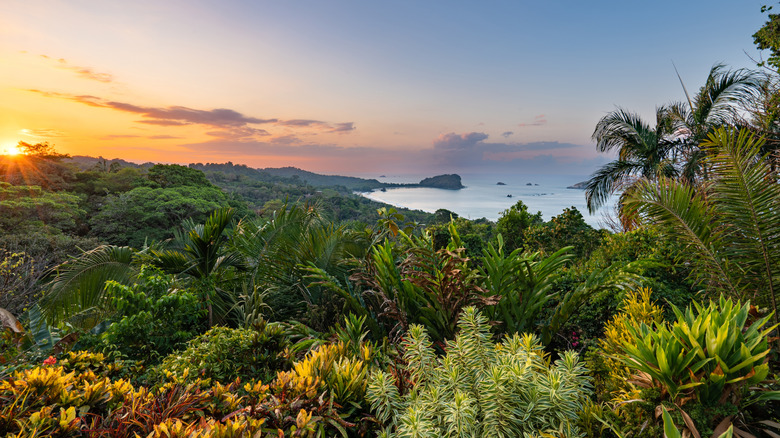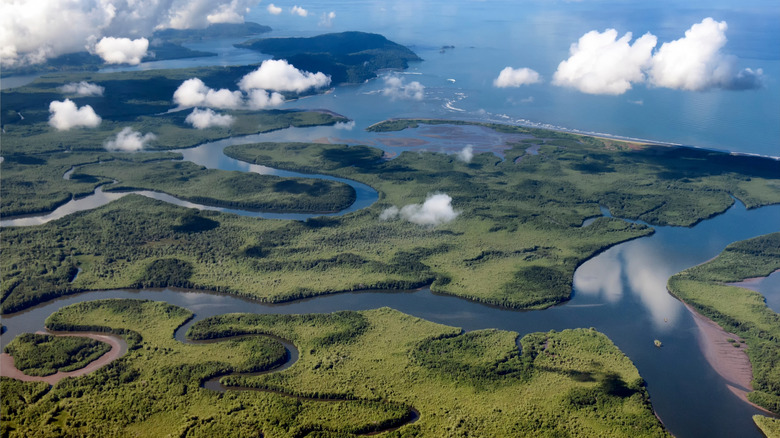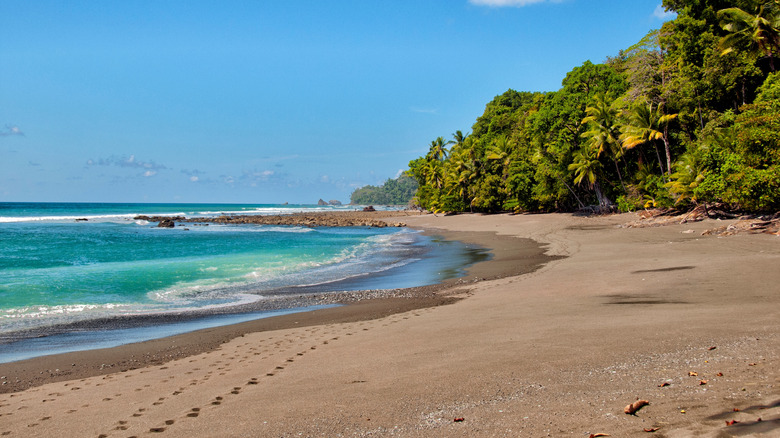This Unsung Costa Rican Town Is A Gateway To Rare Wildlife And Remote Beaches Tucked Along A Jungle River
If you're looking for a vacation experience that will turn you into a modern-day explorer, Costa Rica is full of wonder and natural beauty. Because the country is covered in jungles, rainforests, and nature preserves, you can see all kinds of animals as you venture across rivers, hike along volcanoes, or go deep into the brush. Although there are many places to do these things, one of the most hidden and unsung options is Palmar Sur.
Looking at the map, Palmar Sur doesn't seem like much. It has relatively little infrastructure, even compared to its neighboring city, Palmar Norte, and is surrounded by lush greenery. But that's kind of the point of visiting this little-known slice of paradise. It's not a bustling metropolis, nor does it get thousands of eco-tourists annually. It's also within close proximity to some of the most beautiful sites in the country, such as the Osa Peninsula, a hidden Costa Rican coast that's also one of the world's most biologically diverse destinations.
So, if you want all the thrills of a jungle expedition or a relaxing beachside getaway without crowds and expensive prices, Palmar Sur may be just the ticket. Let's put on our day packs and see what there is to explore.
What to know about Palmar Sur, Costa Rica
Although Palmar Sur is a tiny village, it acts as a primary gateway to the southern part of the country. The town is home to an airstrip, allowing visitors to fly in from San Jose. From there, you can explore all the wilderness areas that the region has to offer. The largest and closest is the Terraba-Sierpe National Wetlands. You can book a boat tour from the nearby town of Sierpe and explore one of the largest mangrove forests in the world. The region is home to over 200 bird species, including kingfishers, herons, and egrets. If you have a sharp eye, you can see crocodiles just below the water's surface and monkeys swinging from branches.
As you venture toward the Pacific coastline, you can take your pick of hidden beaches. There are numerous options dotted along the water, both north and south of the wetlands. To the north, you can walk along Garza Beach or Playa Ventanas. To the south, there's a cluster of small beaches at the mouth of the Sierpe River, including Violin Beach and Ganado Beach. Best of all, because this area isn't overcrowded with tourists, the beaches are relatively open, so you don't have to wade through a sea of people to find a spot to relax.
Although the National Wetlands allow you to experience much of Costa Rica's wildlife, Palmar Sur is also a gateway to the Osa Peninsula and Corcovado National Park, located roughly 55 miles away. There, you can see even more monkeys and birds, along with tapirs, toucans, sloths, deer, macaws, and much more. If you're an insect enthusiast, the park is home to dozens of spiders and insect species you can't find anywhere else.
Planning an exotic getaway to Palmar Sur
The best way to get to Palmar Sur is to fly to Juan Santamaría International Airport in San Jose. Fortunately, you can then take a local plane to the town. Otherwise, the drive is about four and a half hours from San Jose. If you take the coastal route south, you'll pass by one of the world's most impressive tropical forests in Damas, so you might want to stop and enjoy the scenery on your way down.
As far as hotel accommodations, most of those will be across the river in Palmar Norte, which is a bit more developed. You can find local businesses, but there aren't any major chains or resorts in the area. Alternatively, you can drive about 15 minutes south to the town of Sierpe, which also has several hotels and vacation rentals.
One of the best reasons to visit Palmar Sur is to explore Costa Rica's rich biodiversity. However, as you venture into the wild, be aware of the biggest dangers you might encounter in Costa Rica. Stay safe by observing wildlife from a distance, checking local conditions before swimming, and traveling with an experienced guide whenever possible. Safety should always be a priority, especially when you're in an area with minimal public infrastructure.


